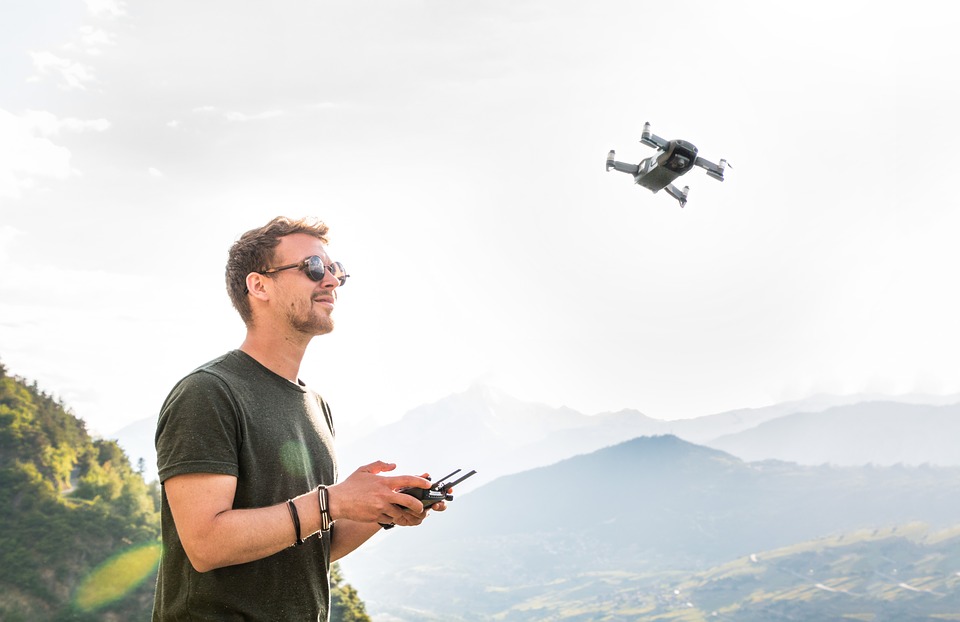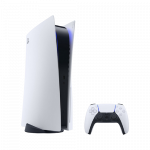Whether you’re a professional photographer looking to take your business to new heights, or a hobbyist who loves spending time outdoors exploring new terrain, there’s a drone out there that’s perfect for you. But with so many options on the market, it can be tough to know where to start. That’s why we’ve put together this guide on the different types of drones available, so you can make an informed decision and find the perfect fit for your needs. Read on to learn more about the world of drones!
Table of Contents
What is a Drone?
A drone often referred to as an “unmanned aerial vehicle” (UAV), is a type of aircraft that doesn’t require a human pilot. Instead, it is controlled remotely by someone on the ground. Drones come in all shapes and sizes, from small, handheld models to large-scale aircraft that can be used for commercial purposes.
Drones have become increasingly popular in recent years, thanks to advancements in technology that have made them more accessible and affordable. Today, drones are used for a variety of purposes, including photography and videography, surveying and mapping, search and rescue operations, and even delivery services.
Drones have been used in the military and aviation sectors for decades, but with the introduction of improved levels of safety and efficiency, they’ve become more popular in civil usage. With a variety of autonomy levels, these drones do not require a pilot on board.
While some drones are controlled by a human operator, others are programmed to fly autonomously. Either way, they offer a level of precision and flexibility that traditional aircraft can’t match. In addition, drones are often much cheaper to operate than traditional aircraft, making them a more attractive option for businesses and individuals alike.
Drones come in all shapes and sizes, and each one is designed for a specific purpose. Some drones are capable of traveling long distances, while others are limited to short-range flights. The type of drone you need will depend on your intended use.
For example, if you’re a hobbyist who wants to take aerial photographs, you’ll need a drone that can travel up to three miles. On the other hand, if you’re looking for a drone that can deliver packages, you’ll need one with a much longer range.
From photography to delivery, drones are changing the way we live and work. One of the most potentially dangerous jobs in the world is searching and rescue. Every year, thousands of people go missing in the wilderness, and it can often be difficult to find them. That’s where drones come in.
Different Types of Drones
Drones come in all shapes and sizes, with a wide range of capabilities. Here is a breakdown of the most common types of drones and their features.
There are four main types of drones: multirotor drones, fixed-wing drones, single rotor helicopters, and fixed-wing hybrid VTOL. Let’s take a closer look at each one.
Multi-rotor drones

Multi-rotor drones are the most common type of drone, and they come in all shapes and sizes. They get their name from the fact that they have multiple rotors, which give them lift and allow them to fly. Multi-rotor drones are typically used for photography and videography, as they are very stable in the air and can carry a heavy payload (such as a camera).
Multi-rotor drones have been gaining in popularity in recent years, due in part to their relatively simple design. Unlike traditional helicopters, which have a single large rotor blade, multi-rotor drones have multiple smaller blades arranged in a circular configuration. This design makes them easier to manufacture, and as a result, they are typically the cheapest option available on the market. Additionally, multi-rotor drones are generally more stable than their single-rotor counterparts, making them ideal for photography and videography.
However, these drones also have several downsides, the most notable of which are their limited flying time, endurance, and speed. As a result, multi-rotor drones are not the best option for those who are looking for a long-term investment. Instead, they are better suited for short-term projects or for those who are just getting started in the world of drone technology.
Fixed-wing drones
Fixed-wing drones are very different from multi-rotor drones, as they only have one set of rotors (usually two). This gives them a more aerodynamic design, which makes them faster and more efficient in the air. However, it also makes them more difficult to fly, as they require a greater degree of skill and experience.
They have wings like a plane, which provide lift and allow them to fly for long periods of time. Additionally, fixed-wing drones are typically equipped with more powerful motors than their multi-rotor counterparts, making them the fastest type of drone available. However, all of this comes at a cost, as fixed-wing drones are usually the most expensive type of drone on the market.
Fixed-wing drones are typically used for longer-duration flights, such as mapping or surveying projects that cover a large area. They are also commonly used in search and rescue operations, as they can cover a lot of ground quickly and easily.
Single rotor drones
Single rotor drones are very similar to traditional helicopters, in that they have one large rotor blade. However, they differ from traditional helicopters in that they also have a smaller set of blades (usually two) that provide lift and stability. This design makes them more maneuverable than traditional helicopters and allows them to take off and land in smaller spaces.
Single rotor drones are typically used for applications that require a lot of lift, such as search and rescue operations or delivering heavy packages. They are also sometimes used in agriculture, as they can carry large amounts of pesticides or other chemicals to spray on crops.
Single rotor drones, while more complex and risky, generally come with a higher price tag. The increased complexity is due to the fact that there is only one rotor blade as opposed to the two or four that are found on most other drones. This means that there is more potential for things to go wrong and for the drone to lose control.
Additionally, single rotor drones are more difficult to operate, making them less popular with novice users. However, for experienced users, these drones can offer a unique flying experience. Their high cost is due in part to the increased risks associated with their use, but also because they tend to be made from higher quality materials. As a result, single rotor drones are not for everyone, but those who are willing to pay the price can enjoy a unique and exciting flying experience.
Hybrid VTOL drones
As the name implies, hybrid VTOL drones are a combination of fixed-wing and multi-rotor drones. They have the ability to take off and land like a multi-rotor drone, but they can also fly like a fixed-wing drone. This gives them the best of both worlds, making them incredibly versatile.
Hybrid VTOLs have the long flight times of fixed-wing drones, as well as the ability to hover like rotor-based models. This makes them ideal for applications that require both extended flight times and the ability to hover in places, such as surveillance, mapping, and photography.
They are typically used for applications that require a lot of flexibility, such as search and rescue operations or mapping projects. They are also sometimes used in agriculture, as they can cover large areas quickly and easily.
Hybrid VTOLs are also able to take off and land in tighter spaces than fixed-wing drones, making them more versatile and convenient to use. The only downside to hybrid VTOLs is that they generally cost more than either fixed-wing or rotor-based models. However, for applications that require the extended flight time and hovering capability of a hybrid VTOL, the extra cost is often worth it.




